
eBook - ePub
A Practical Guide to Alterations and Improvements
J. Buckland, Mrs B M Cooper, R. Cooper
This is a test
Partager le livre
- 168 pages
- English
- ePUB (adapté aux mobiles)
- Disponible sur iOS et Android
eBook - ePub
A Practical Guide to Alterations and Improvements
J. Buckland, Mrs B M Cooper, R. Cooper
Détails du livre
Aperçu du livre
Table des matières
Citations
À propos de ce livre
A practical guide which enables small builders to tackle everyday alteration and improvement projects with confidence.
Foire aux questions
Comment puis-je résilier mon abonnement ?
Il vous suffit de vous rendre dans la section compte dans paramètres et de cliquer sur « Résilier l’abonnement ». C’est aussi simple que cela ! Une fois que vous aurez résilié votre abonnement, il restera actif pour le reste de la période pour laquelle vous avez payé. Découvrez-en plus ici.
Puis-je / comment puis-je télécharger des livres ?
Pour le moment, tous nos livres en format ePub adaptés aux mobiles peuvent être téléchargés via l’application. La plupart de nos PDF sont également disponibles en téléchargement et les autres seront téléchargeables très prochainement. Découvrez-en plus ici.
Quelle est la différence entre les formules tarifaires ?
Les deux abonnements vous donnent un accès complet à la bibliothèque et à toutes les fonctionnalités de Perlego. Les seules différences sont les tarifs ainsi que la période d’abonnement : avec l’abonnement annuel, vous économiserez environ 30 % par rapport à 12 mois d’abonnement mensuel.
Qu’est-ce que Perlego ?
Nous sommes un service d’abonnement à des ouvrages universitaires en ligne, où vous pouvez accéder à toute une bibliothèque pour un prix inférieur à celui d’un seul livre par mois. Avec plus d’un million de livres sur plus de 1 000 sujets, nous avons ce qu’il vous faut ! Découvrez-en plus ici.
Prenez-vous en charge la synthèse vocale ?
Recherchez le symbole Écouter sur votre prochain livre pour voir si vous pouvez l’écouter. L’outil Écouter lit le texte à haute voix pour vous, en surlignant le passage qui est en cours de lecture. Vous pouvez le mettre sur pause, l’accélérer ou le ralentir. Découvrez-en plus ici.
Est-ce que A Practical Guide to Alterations and Improvements est un PDF/ePUB en ligne ?
Oui, vous pouvez accéder à A Practical Guide to Alterations and Improvements par J. Buckland, Mrs B M Cooper, R. Cooper en format PDF et/ou ePUB ainsi qu’à d’autres livres populaires dans Architecture et Architecture General. Nous disposons de plus d’un million d’ouvrages à découvrir dans notre catalogue.
Informations
Project 1
Double hung sash windows
The majority of house owners are inclined to indiscrimately replace these very practical and attractive windows with their modern day counterparts of aluminium or standard mass produced side hung casements. This is usually thought to be a cheaper and more efficient form of replacement, although such is not always the case.
The builder invited to quote for this type of job will have to take much more into account that just the price of a purpose made window and his labour costs. Scaffolding (either traditional or tower) is an essential and costly item and should be erected and maintained in strict accordance with the Construction Regulations (Working Places). If the scaffold projects over a public highway, e.g. the pavement, then further precautions and lighting have to be provided.
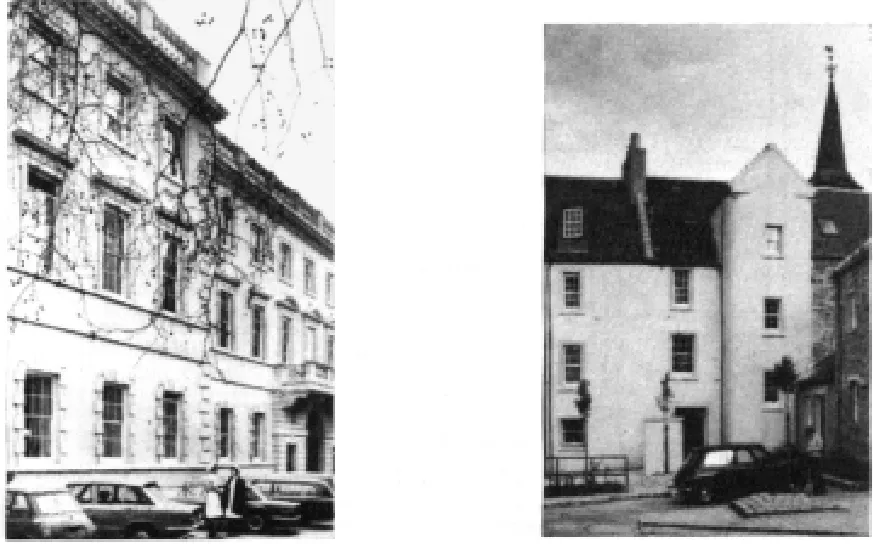
The builder in this instance will be legally known as the main contractor and so is responsible for all aspects of the job, including scaffolding. Building Regulations approval is usually not necessary for this type of work unless the opening is structurally altered or the areas of openable window are reduced.
Working in occupied premises always involves hidden costs and a percentage is usually added to the estimate to allow for this. The employer’s bedroom cannot be treated as a building site! Removal and protection of furniture, curtains, etc., cleanliness and security are of great importance and the owner of the house will probably be equally concerned about the way in which he and his property are treated as to the quality of the job itself.
Double hung sash windows were traditionally made with a cased frame as shown in Fig. 1 and the weight of the sashes is offset by cast iron weights in the frame. When the new window is constructed, the sashes will probably be of a different weight to the existing, and so new counterbalance weights should be provided. Sash chains should be used where the size and weight of the sash would place too much strain on the cord.
Some of the larger joinery manufacturers sell a range of factory made double hung sash windows and though these are normally of an acceptable standard, their sizes and styles may not match the original windows of a house. It is normal practice today for these sashes to be operated by a system of spiral springs instead of cords, pulleys and weights. Speed of production and fewer materials mean that costs are subsequently reduced. This type of construction relies upon friction holding the sash in place and although it is effective, the appearance of the frame is altered considerably; see Fig. 2.
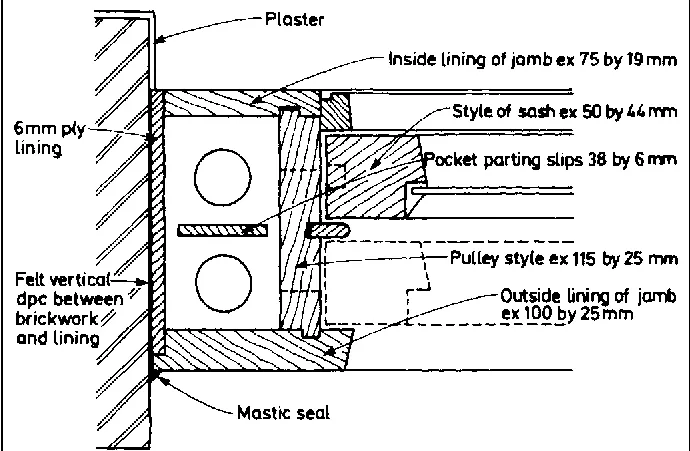
Fig. 1. Sectional plan showing the traditional method of balancing the sashes with weights—cased frame
The construction, design and quality of double hung sash windows is defined in the current British Standard. The small builder is unlikely to have the resources to produce the window himself and there are many competent joinery workshops around that specialise in the faithful reproduction of all types of windows. Redwood is the most commonly used timber for the construction of windows today, although if the builder has priced for an exact duplicate the existing type of wood should be determined. Oak, teak and pine were also used extensively in previous years and the price could vary considerably. The sill, however, should always be constructed of a more durable wood like oak.
After scaffold is erected and preparations are made to protect the houseowner’s belongings, plastering should be hacked off internally and rendering to the external reveals removed to allow the old window to be taken out. If the stone sill is damaged then this too should be carefully replaced.
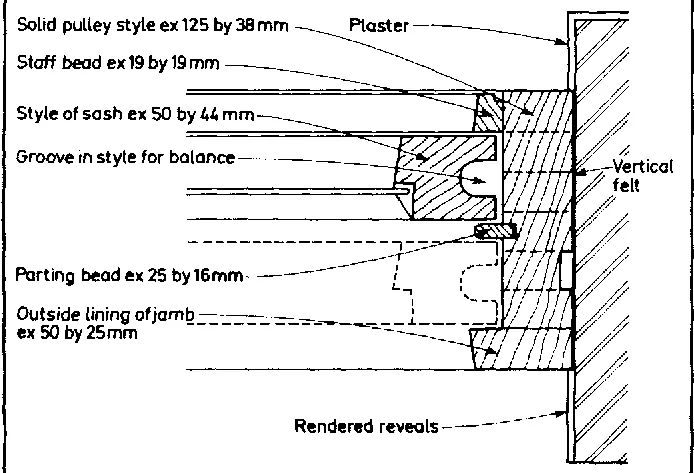
Fig. 2. Sectional plan showing the spiral springs method of sash control
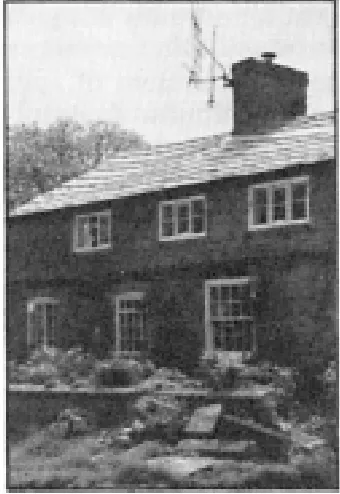
Repairs to brickwork and pointing should be taken into account and although this may be an unforeseeable item at the time of estimating, allowances should nevertheless be made.
Fig. 3 shows the relationship between sills, window and brickwork. Throating and weathering to both the timber and stone/ concrete sills to properly throw off rainwater and avoid dampness are necessary if the window is to last for any length of time. You only get what you pay for, and this is especially true of joinery. It is not worth trying to cut corners and use inferior or smaller section timber as the shorter life of the window will only reflect this false economy in the long term. The importance of careful preparation and regular maintenance should be stressed to the client at the time of the installation.
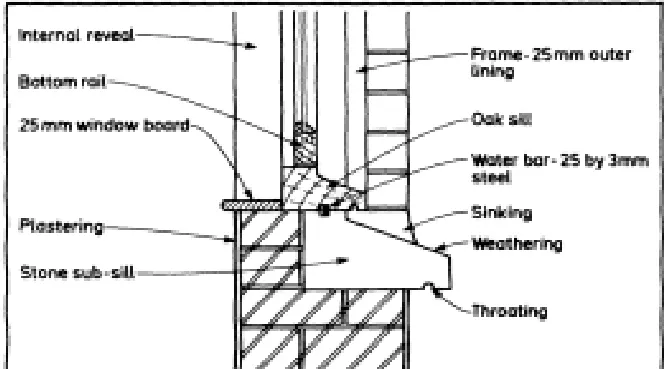
Fig. 3. Section through sill showing relationships between sills, frame and brickwork
The correct size and style of sill may not be readily available and so a reconstituted stone or cast concrete sill will have to be made up. A water bar should be inserted between the top of the stone sill and the underside of the oak sill. This water bar is bedded in mastic in the ...